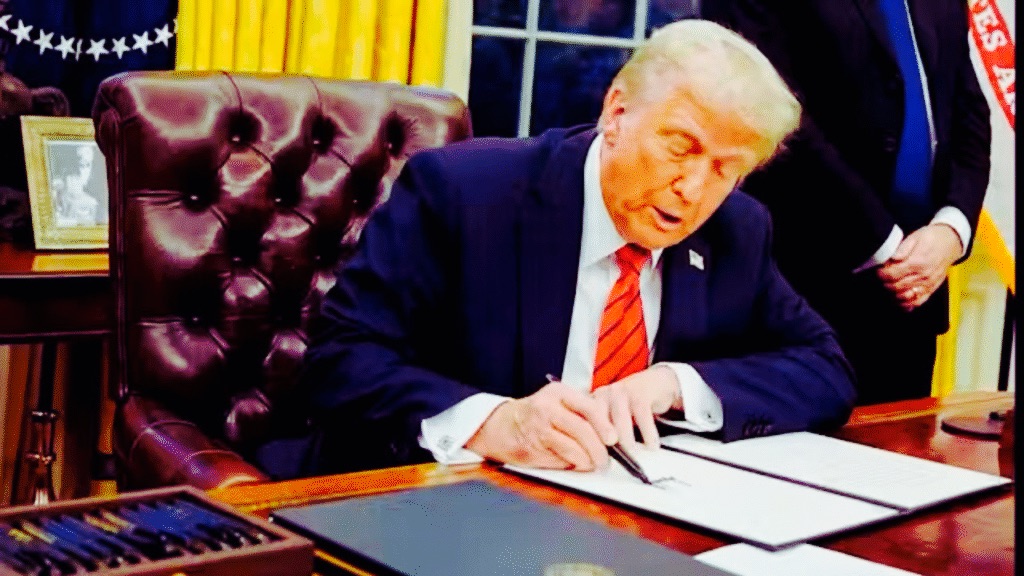Introduction: Understanding the ‘Donald-25’ Trade Shock
The term ‘Donald-25’ trade shock has quickly become one of the most discussed phrases in global economic discourse. Coined after the controversial policy shift initiated during Donald Trump’s second term in 2025, this seismic event sent ripples through the world economy, disrupting supply chains, redefining trade relations, and reshaping global financial markets. This article provides a comprehensive, SEO-optimized analysis of the Donald-25 trade shock, explaining its origins, its widespread impact, and what it means for the future of international commerce.
What Is the ‘Donald-25’ Trade Shock?
The Donald-25 trade shock refers to a drastic set of protectionist trade policies implemented by former President Donald Trump in 2025. This included:
- A sweeping 25% tariff imposed on all imports from China, the European Union, and select Latin American countries.
- The immediate withdrawal from several multilateral trade agreements, including the USMCA and CPTPP.
- Strict export controls on key American technologies and agricultural products.
- Currency manipulation accusations that led to financial sanctions on central banks deemed “predatory.”
This aggressive reshaping of U.S. trade policy led to a global economic disruption with far-reaching consequences.

The Immediate Global Impact
1. Supply Chain Chaos
Multinational corporations, especially in sectors like electronics, automotive, and pharmaceuticals, were heavily reliant on just-in-time manufacturing models. The sudden imposition of tariffs and export controls led to:
- Product shortages in the U.S. and allied nations.
- Increased production costs due to shifting supply sources.
- Delays and backlogs in logistics and shipping lanes.
2. Financial Market Volatility
Within weeks of the announcement:
- The S&P 500 dropped by 18%.
- Global stock markets lost over $5 trillion in value.
- The U.S. dollar spiked, affecting debt-laden emerging markets.
The Donald-25 trade shock also led to major rebalancing of portfolios as investors fled risky assets in favor of commodities and government bonds.
3. Inflation and Consumer Prices
With imports becoming costlier, inflation surged across multiple economies. In the U.S., inflation reached a year-over-year rate of 7.3% by Q3 2025. Essential goods, such as:
- Electronics (up 21%)
- Automobiles (up 16%)
- Groceries (up 9%)
saw steep price increases, putting pressure on consumers and small businesses alike.
Strategic Realignments: Winners and Losers
Winners:
- India and Vietnam: Gained manufacturing contracts previously dominated by China.
- Domestic U.S. producers: Benefited from reduced competition, though only short-term.
- Energy exporters: Saw a boom due to new bilateral deals.
Losers:
- China and the EU: Faced export declines and retaliatory tariffs.
- U.S. farmers: Lost access to key export markets.
- Tech companies: Suffered from global R&D fragmentation and restrictions on cross-border collaboration.
Long-Term Consequences of the Donald-25 Shock

1. De-globalization Accelerates
The ‘Donald-25’ event is widely credited with accelerating the trend of de-globalization. Countries began focusing on regional trade pacts, onshoring, and strategic decoupling, especially in sensitive sectors like semiconductors, defense, and AI.
2. Shift in Global Trade Leadership
With the U.S. perceived as an unreliable trade partner, China, the EU, and emerging economies formed new alliances. The BRICS+ bloc expanded its influence, creating a parallel global trade network that increasingly bypasses U.S. dollar dependency.
3. Policy Innovation and Protectionism
Governments worldwide are now more willing to experiment with protective economic policies. Subsidies for domestic industries, nationalist procurement rules, and data sovereignty laws have surged in popularity.
Conclusion: What Lies Ahead?
The Donald-25 trade shock has permanently altered the fabric of international economics. While it aimed to “bring jobs back” and protect American industry, the unintended consequences—from inflation to global realignments—highlight the complexity of global trade in the 21st century.
As nations recalibrate their economic strategies, one thing is certain: the world will never trade the same way again.
Want more insights on global economic trends? Subscribe to our newsletter and stay ahead of the curve.
